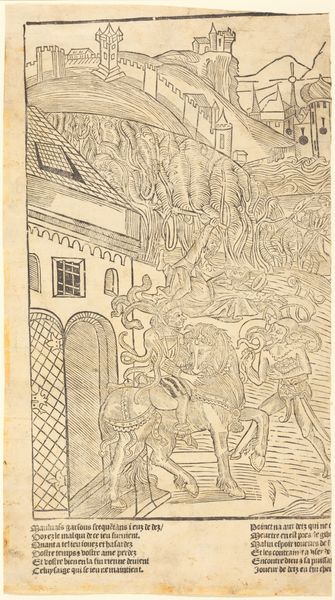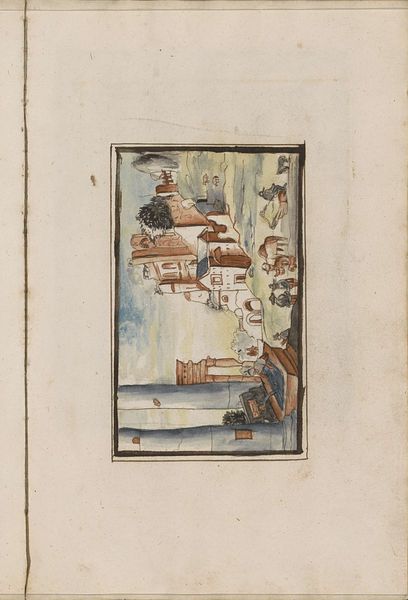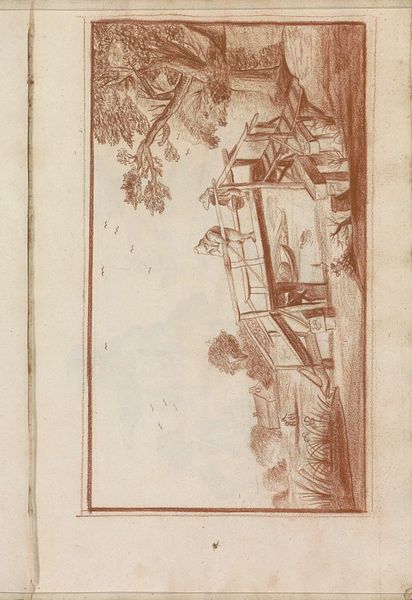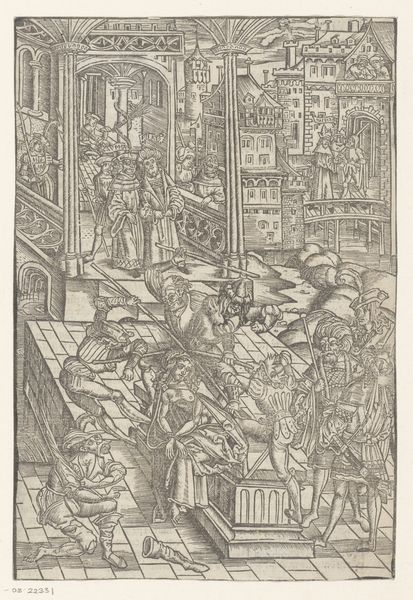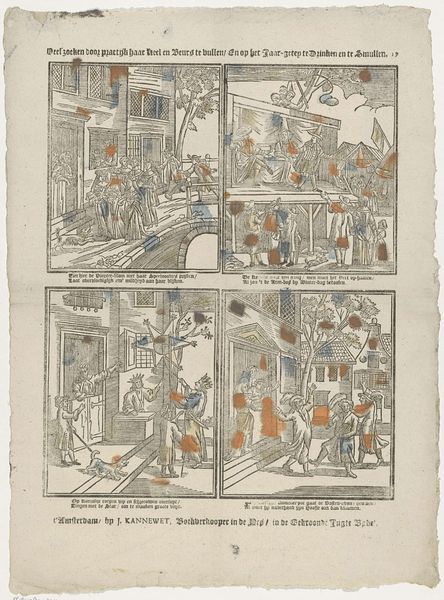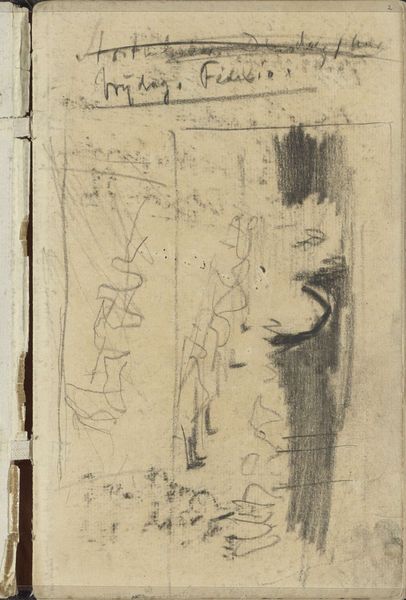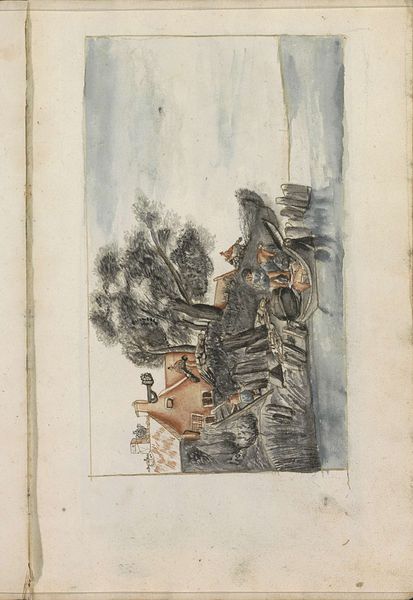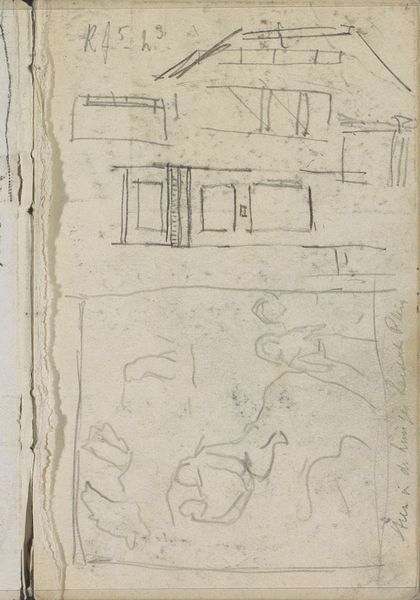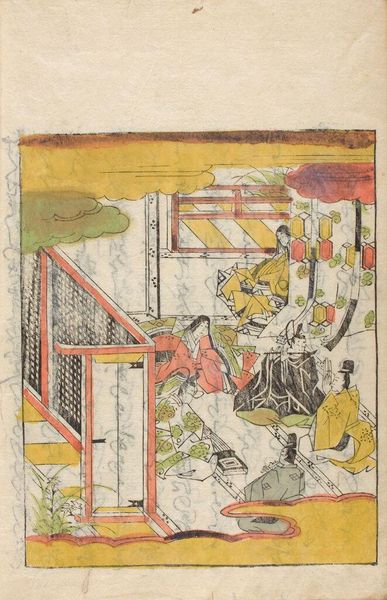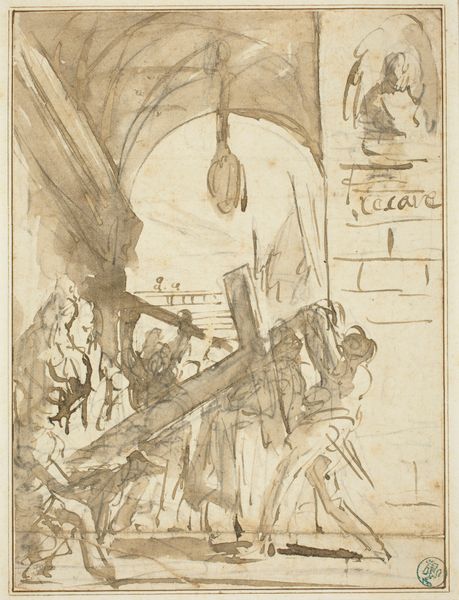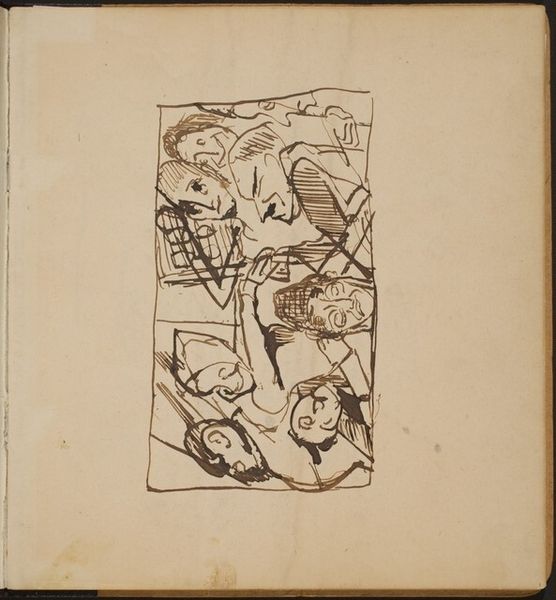
drawing, coloured-pencil, pen
#
drawing
#
coloured-pencil
#
dutch-golden-age
#
landscape
#
coloured pencil
#
pen
#
cityscape
#
genre-painting
Copyright: Rijks Museum: Open Domain
Curator: Look at the textures! You can practically feel the roughness of the paper. Editor: I'm drawn in by that, too. Hendrick van Beaumont rendered "Dorpsstraat met een brillenverkoper"—"Village street with an eyeglasses seller"—around 1696, using pen and coloured pencil on paper. The materiality is so present. Curator: Immediately, the figures seem trapped by their domestic realities. I see this in the lens of patriarchal structures limiting possibilities, framing vision literally, through these eyeglasses for sale, but also figuratively—limiting one's potential perspective. Editor: That's fascinating. I'm interested in how the marketplace acts almost as the frame. It defines a liminal zone between labor and the exchange of commodities, suggesting that individual identities are being made and bought in a social process. The making and the selling all point to materiality of the spectacle and transaction in Dutch society. Curator: Indeed. And look at how Beaumont uses genre-painting and cityscape traditions here; it pushes this work beyond a simple illustration. These lenses become a way to observe a society grappling with vision impairment but more widely speaking, with moral clarity or the lack thereof, and how it sells remedies or palliatives to compensate for a damaged vision. It's deeply critical! Editor: I think it is more an insightful recording. Observe how this material recording itself participates in an economy of sight? Beaumont's decision to utilize colored pencil, in particular, reveals this society's willingness to beautify labor and spectacle and how beauty adds value in that culture. It doesn't hide; it showcases. Curator: A critical record—or a romantic vision of an urban center—or maybe both! Either way, the details here, and these subtle colors, evoke deeper ideas concerning vision and representation. It raises essential issues about how societal biases or hopes could be embedded in the work of vision. Editor: It encourages us to look closer to the cultural means that drive both what we consider everyday life but moreover what art has come to communicate through these means! Thank you for the insight.
Comments
No comments
Be the first to comment and join the conversation on the ultimate creative platform.
